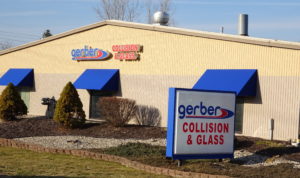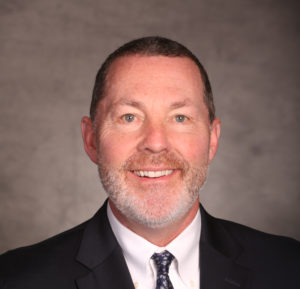
Gerber parent Boyd talks parts, OEM repair procedures in earnings call
By onBusiness Practices | Market Trends | Repair Operations
Boyd Group Services Tim O’Day told investors last week that efforts to require OEM auto body repair procedures in certain states wouldn’t affect his company.
“We follow OEM repair procedures today,” said O’Day, whose publicly traded company derives a significant part of its revenue from U.S. subsidiary Gerber Collision.
Researching and following automaker instructions for fixing a vehicle was “a key part of any repair,” O’Day explained on a Wednesday earnings call in response to an analyst’s inquiry about repair procedure bills.
“It should have no impact on us,” O’Day said of the repair procedure legislation.
The analyst asked whether the company could pass on pricing to consumers if the bills fueled OEM part sales. Critics have argued that a mandate to follow automaker guidelines would include following manufacturers’ promotion of new OEM parts for vehicle repairs.
“The aftermarket is protected,” O’Day said, in what appeared to be a reference to repairers (i.e. the automotive aftermarket), rather than aftermarket parts specifically.
O’Day also described such OEM statements as milder than other OEM instructions.
“Those are usually position statements by the OEs rather than mandates,” O’Day said. He said he felt “mandates would be a little bit more difficult.”
Being forced to only use OEM parts would pose a risk of higher repair costs which would “potentially impact total loss rates,” O’Day said. CCC’s 2021 “Crash Course” indicates 20.5 percent of vehicles were totaled in 2020 with an average cash value of $10,444. A decade ago, only 15 percent of vehicles were totaled.
The percentage of repairable vehicles that the existence of alternative parts is sparing from flipping to total losses is unclear.
The Automotive Body Parts Association in 2019 told the FTC that alternative parts are 15-50 percent less expensive than OEM components. But alternative parts only reduce a minority of a minority of the repair bill.
Parts spending represented 40.1 percent of the average repair bill last year, according to CCC. And less than 40 percent of that amount involved alternative components; the remainder of the average repair’s part spending still went to OEM parts.
O’Day said keeping repair costs down meant deploying “cost-effective quality alternative parts where it makes sense.” And he said he thought a “fair amount of market pressure” would exist for a “healthy alternative part market.”
In a similar vein, O’Day was asked earlier if the company had noticed any part price inflation related to supply chain disruption, and whether that would affect which category of components were used on vehicles.
As certain prices rose, it could make different parts categories more competitive but there was “nothing that we’ve noted to date,” O’Day said. He also said the company is able to pass parts price increases to customers (rather than have to eat the cost increase).
O’Day said some parts availability problems had arisen, but he suspected some of this was due to manufacturers’ “ability to get parts through the system and from overseas.”
More information:
I-CAR Repairability Technical Support portal of links to official OEM repair procedure websites
Boyd Group Services first-quarter 2021 earnings call
Boyd Group Services, May 12, 2021
Boyd Group Services first-quarter 2021 report
Boyd Group Services, May 12, 2021
Images:
A Gerber location in the Grand Rapids, Mich., area is shown. (John Huetter/Repairer Driven News)
Boyd Group Services CEO Tim O’Day. (Provided by Boyd Group)

